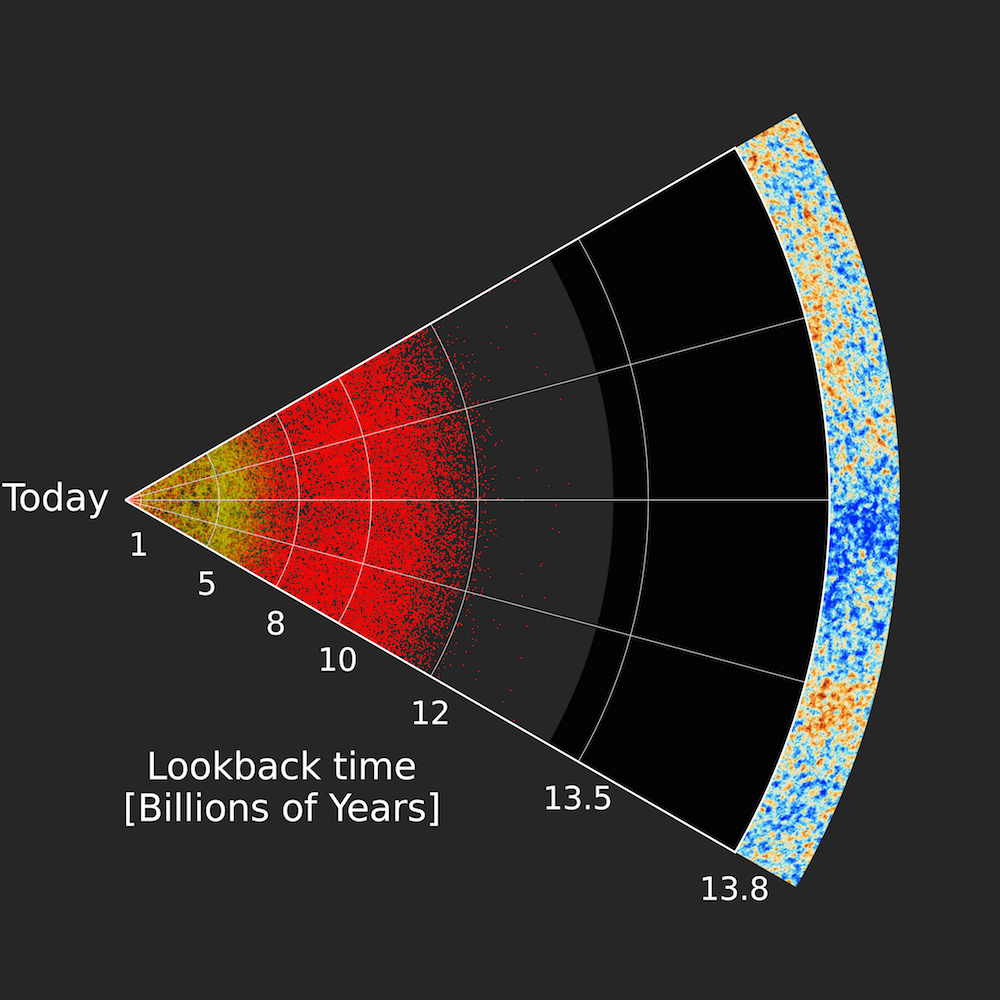
A team of astrophysicists from UZH has simulated the formation of the entire Universe, producing a catalog that will help unlock the secrets of the "Dark Universe".

A presentation at the June 6th AAS meeting confirms that our galaxy is inside an enormous cosmic void, the largest one ever discovered.

Astronomers with the Sloan Digital Sky Survey (SDSS) have created the first map of the large-scale structure of the Universe based entirely on the positions of quasars.

The hypothesis is cosmological natural selection, and its power, beauty and logic provide what may be the best scientific explanation for the existence of complexity and life in the universe.

Astronomers have performed an accurate census of the number of galaxies in the universe. There are at least 10 times as many galaxies in the observable universe as previously thought.

The universe is expanding uniformly according to research led by University College London (UCL) which reports that space isn’t stretching in a preferred direction or spinning.

A new paper shows that the recent discoveries of exoplanets combined with a broader approach to the question makes it possible to assign a new empirically valid probability to whether any other advanced technological civilizations have ever existed.

With the full suite of observations of the Universe now at our disposal, what is the story, contents, and history of the Universe?

Researchers have recreated the universe's primordial soup in miniature format by colliding lead atoms with extremely high energy in the 27 km long particle accelerator, the LHC at CERN in Geneva.

Galaxies have halos surrounding them, which may be composed of both dark and regular matter. This image shows a substructure within a halo in the Q Continuum

In January 2002, astronomers discovered a massive explosion coming from V838 Monocerotis. They initially thought they were witnessing a supernova, but after the initial flash of light began to dim (as expected), it began to brighten again in infrared wavelengths at the beginning of March. After that brightening faded, another one happened in April.

A record-breaking star system has been discovered, playing host to nine alien worlds -- including three "super-Earths."

The pulsar at the center of the famous Crab Nebula is a veritable bundle of energy. Astronomers observed the pulsar in the area of very high energy gamma radiation from 25 up to 400 gigaelectronvolts (GeV), a region that was previously difficult to access with high energy instruments, and discovered that it actually emits pulses with the maximum energy of up to 400 GeV -- 50 to 100 times higher than theorists thought possible. These latest observations are difficult for astrophysicists to explain.

First spectroscopic results from BOSS give the most detailed look yet at the time when dark energy turned on some six billion light years ago, as the expansion of the universe was slipping from the grasp of matter

(PhysOrg.com) -- Some six billion light years distant, almost halfway from now back to the big bang, the universe was undergoing an elemental change. Held back until then by the mutual gravitational attraction of all the matter it contained, the universe had been expanding ever more slowly. Then, as matter spread out and its density decreased, dark energy took over and expansion began to accelerate.